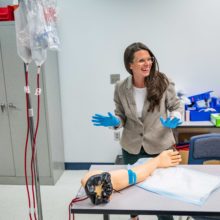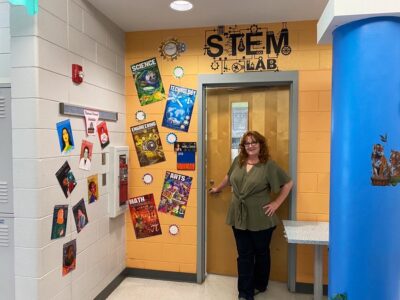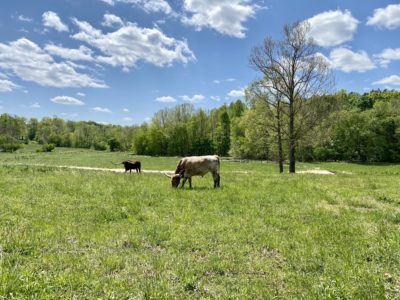
|
|
For colleges, applying for grants can be a daunting task. It’s labor-intensive and can take months to gather information for particular applications. And the grant process for smaller institutions is often more complex due to limited capacity and resources.
Since the 1950s, the U.S. National Science Foundation (NSF) has invested funds to help America’s colleges and universities bolster research that promotes the progress of science and engineering. The independent federal agency provides grants to institutions for basic research and “solutions-oriented research with the potential to produce advancements for the American people.”
Some focus areas for these grants include biology, technology, engineering, and diversity in science, technology, engineering, and mathematics (STEM), to name a few.
In this EdExplainer, we offer tips and guidance for community colleges seeking to apply for NSF grants, as well as other federal grant programs. We cover what NSF grants are, how to find grant opportunities, how to start the grant application process, and ideas for leveraging resources and partnerships.
NSF grants in action
Over the past 40 years, Wake Technical Community College has received 21 NSF grants and received funding last year totaling $1.4 million for the college’s STEM Academic Research and Training (START) program. The program is funded through NSF’s Advancing Innovation and Impact in Undergraduate STEM Education at two-year institutions.
According to a press release from the college, the funds are intended to strengthen the college’s STEM Academic Research & Training program over the next five years. The program will implement paid research laboratory-based opportunities with university partners. At its core, the project aims to increase access for underrepresented populations in STEM education.
U.S. Rep. Deborah Ross spoke with EdNC about the importance of two-year institutions applying for NSF grants.
“In order to do everything that we need to do with the sciences for the future, it’s not just inventing the things – it’s being able to implement (them),” she said. “It’s having that workforce that we need to be able to do manufacturing, to be able to execute complicated systems.”
Because the federal grant process can be cumbersome, EdNC also reached out to Amy MacDonald, dean of sponsored programs at Wake Tech, to discuss their grant application process.
We’ve compiled a list of tips and resources for colleges who are considering applying for NSF grants and other sources of federal funding.
Getting started
Administration should start by asking, what are the needs of the college? Determining those needs comes from a variety of places across campus – senior leadership, faculty, and college data. Based on needs, colleges can then try to match their needs and ideas with opportunities from funders.
MacDonald pointed out that funding opportunities can sometimes precede the idea. The grants team at Wake Tech may see a funding opportunity and consider whether the opportunity fits an area the college would like to grow or expand. Part of that process includes evaluating capacity across campus to take on the project.
Finding grant opportunities and sharing information
MacDonald shared a few ideas when it comes to finding and sharing information about grant opportunities:
- Monitor the government-wide registry for grants. MacDonald suggests being proactive and knowing the different types of grant programs that community colleges are eligible to apply for.
- Create a basic information template for your institution that can be shared with senior leadership about the opportunities that are available. MacDonald said this is typically one to two pages.
- Establish relationships with four-year university partners, particularly research-based institutions, in order to share ideas and learn about new opportunities.
- Maintain connections with members of Congress. MacDonald said those individuals can often offer insight as to grant programs that may be a fit for your institution or connect you with agency staff members who can provide further assistance.
Applying for NSF grants
A good starting point for institutions applying for NSF grants is Project Vision – “an NSF funded initiative to help colleges discover and match innovative ideas with NSF funding opportunities.”
Project Vision is led by a team of experts including former college presidents and NSF program officers. The team offers on-site analysis and follow-up services as colleges work to increase STEM and grant capacity on their campuses.
One of the main goals of Project Vision is to help two-year colleges, particularly small, rural colleges with insight and experience that can help them brainstorm ideas and create NSF grant proposals.
Colleges of 10 are selected each July for services the following year. Information about what needs to be completed and how to apply can be found here. The deadline to apply this year is July 31, 2023.
Beyond Project Vision, colleges can access NSF’s funding search portal to view current and past grant opportunities.
Lessons learned from applying for NSF and other federal grants
If at first you don’t succeed, try again — that’s MacDonald’s advice when applying for NSF and other federal grants. The process itself can be a learning opportunity and a chance to improve as institutions continue to apply for grants.
- Connect with program officers at NSF. Institutions can create a presentation or concept paper that can help NSF program officers guide institutions prior to applying for a grant.
- Listen to reviewer feedback. Often institutions aren’t awarded the grant on the first try. MacDonald said it’s important to take the reviewers feedback and integrate recommendations when applying again.
- Look to those who did get funded. Evaluate what those institutions did in their grant application and implement ideas that fit your institution.
Additional resources and programs
The American Association of Community Colleges (AACC) announced a national grant competition for their MENTORLINKS program, which is supported by NSF. MENTORLINKS offers technical assistance and networking opportunities “for the purpose of improving undergraduate programs that prepare technicians in the science, technology, engineering, and mathematics (STEM) fields.”
Colleges work with mentors who have either designed or implemented STEM education programs on campuses. This particular grant is a professional development and technical assistance program with a strong emphasis on the mentoring relationship.
Find more information about the MENTORINGLINKS program here. The deadline to apply has been extended to July 14, 2023.
Another resource is the Federal Funding Task Force. Through the Council for Advancement and Support of Education (CASE) is a member community of network peers that are resource guides for institutions who are pursuing grants. The next convening is scheduled for Oct. 22, 2023.
Have tips and advice to share about your institution’s grant writing process? Send an email to Emily Thomas.





